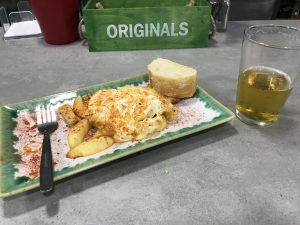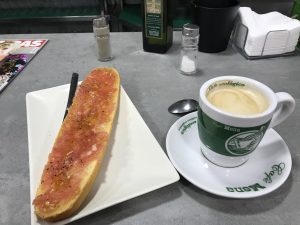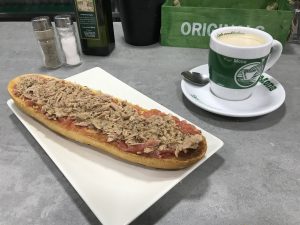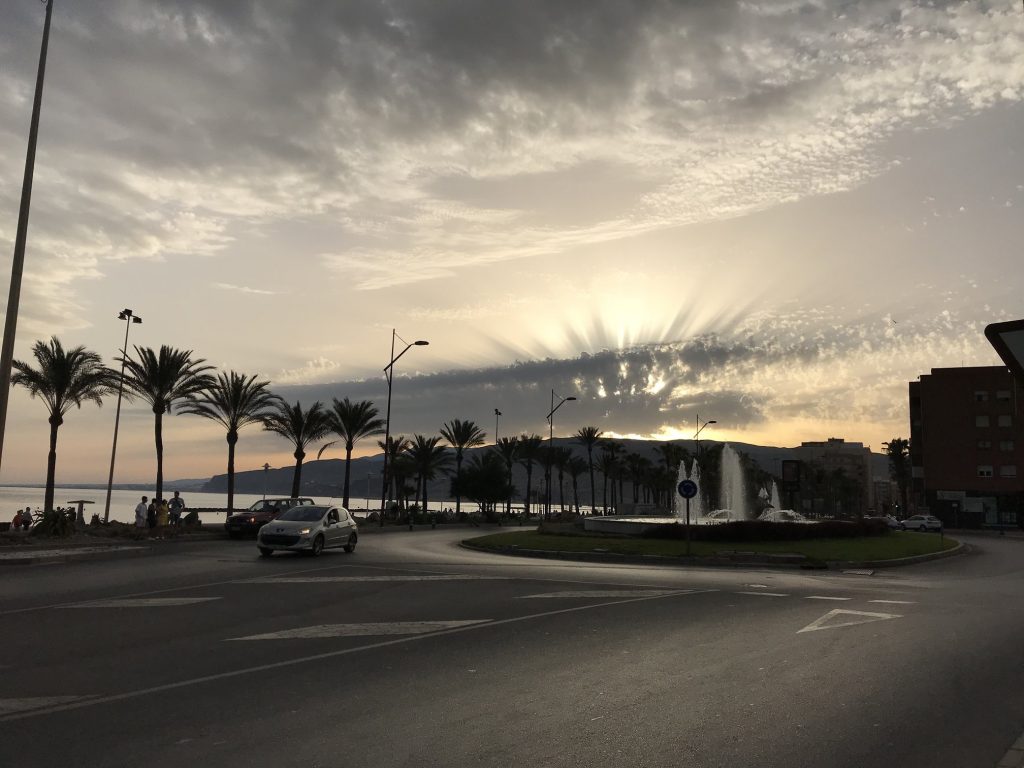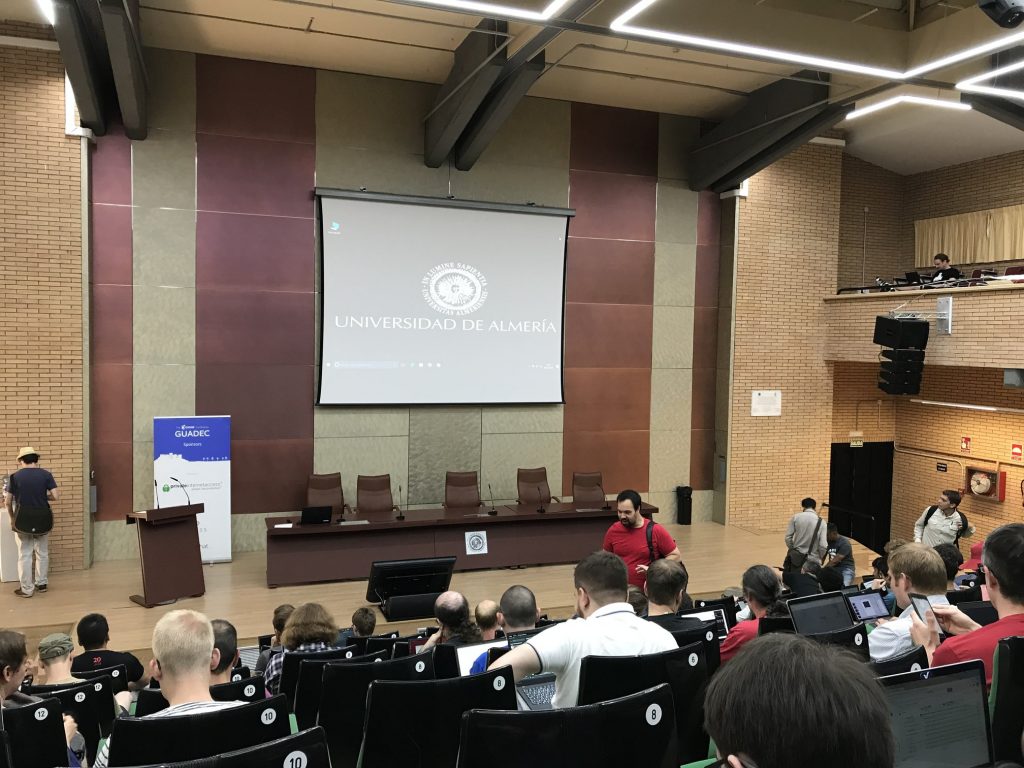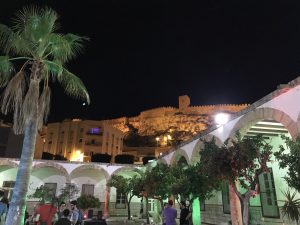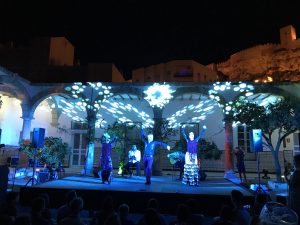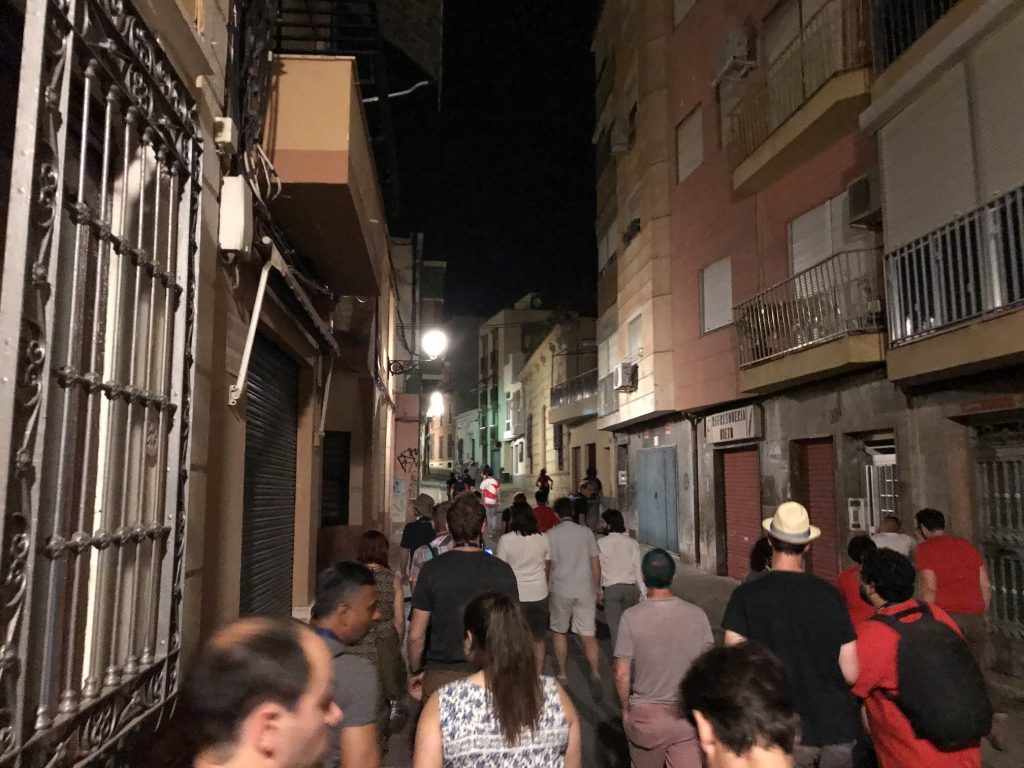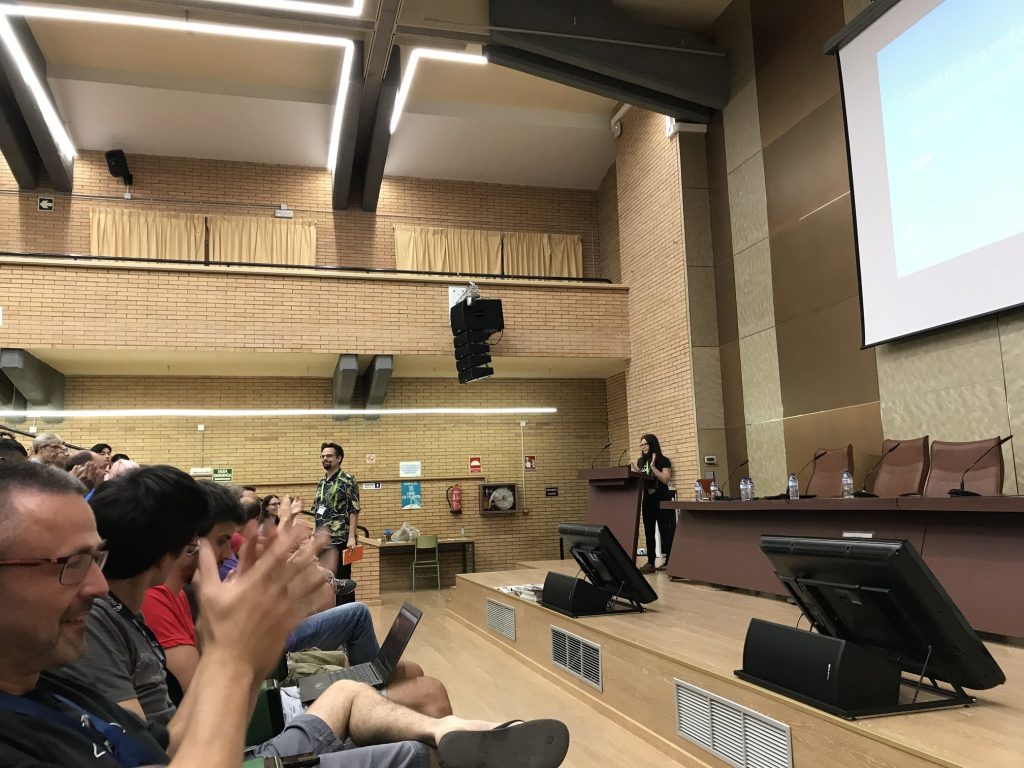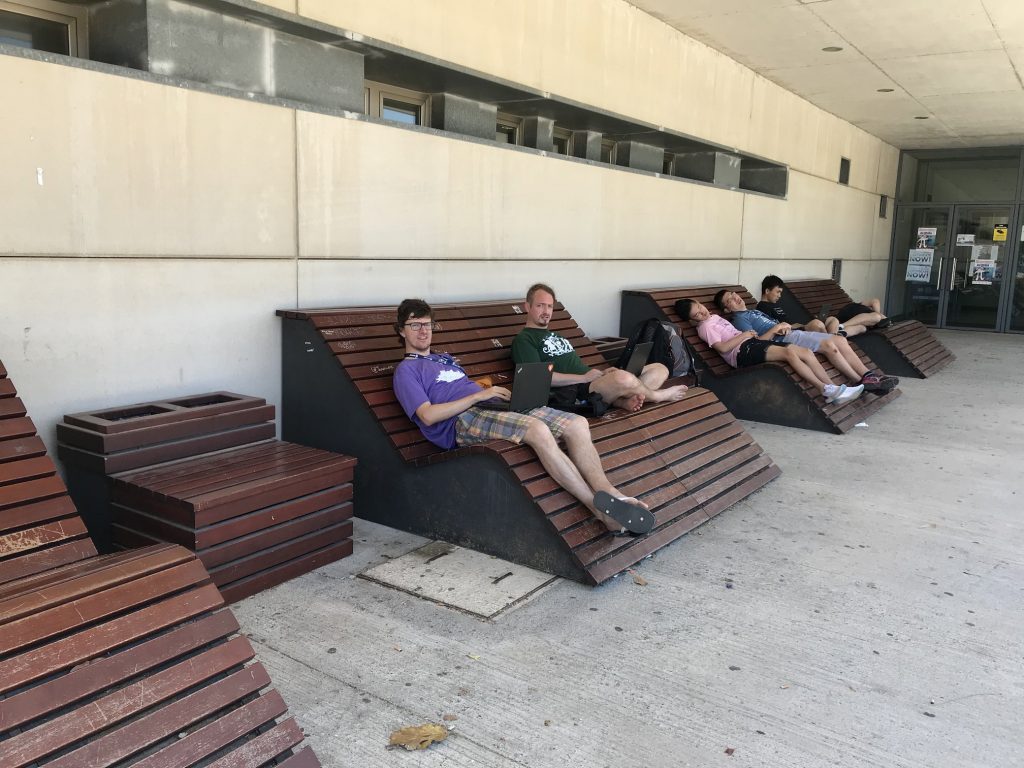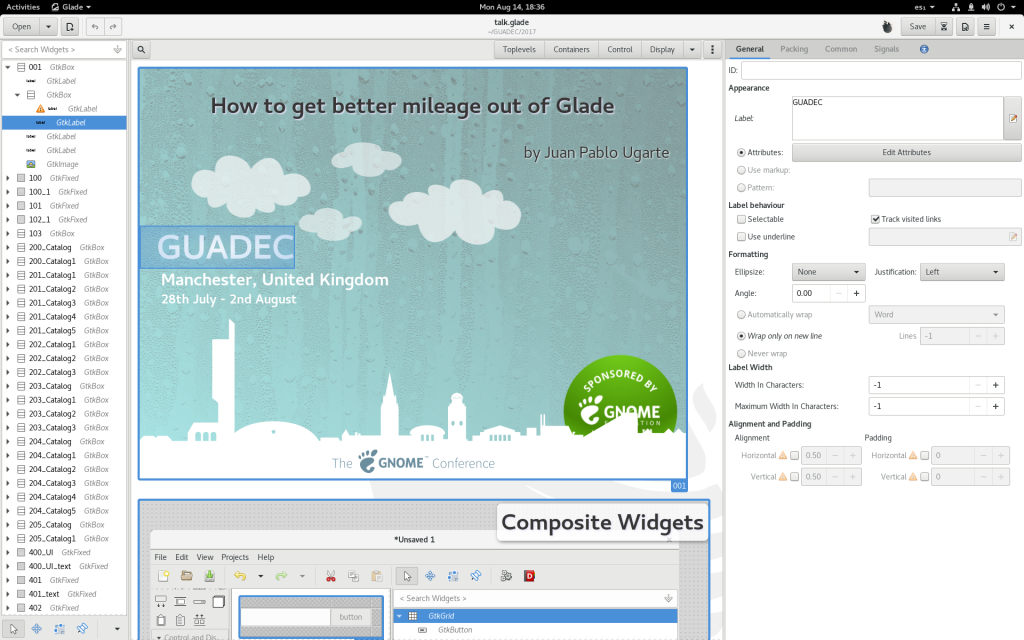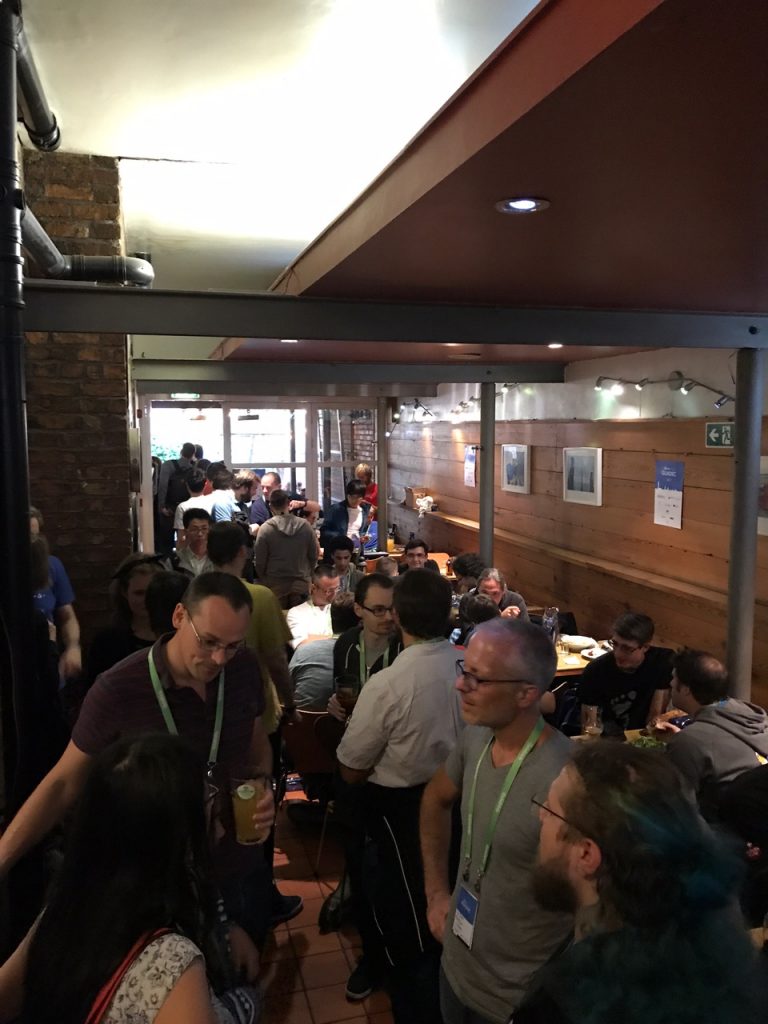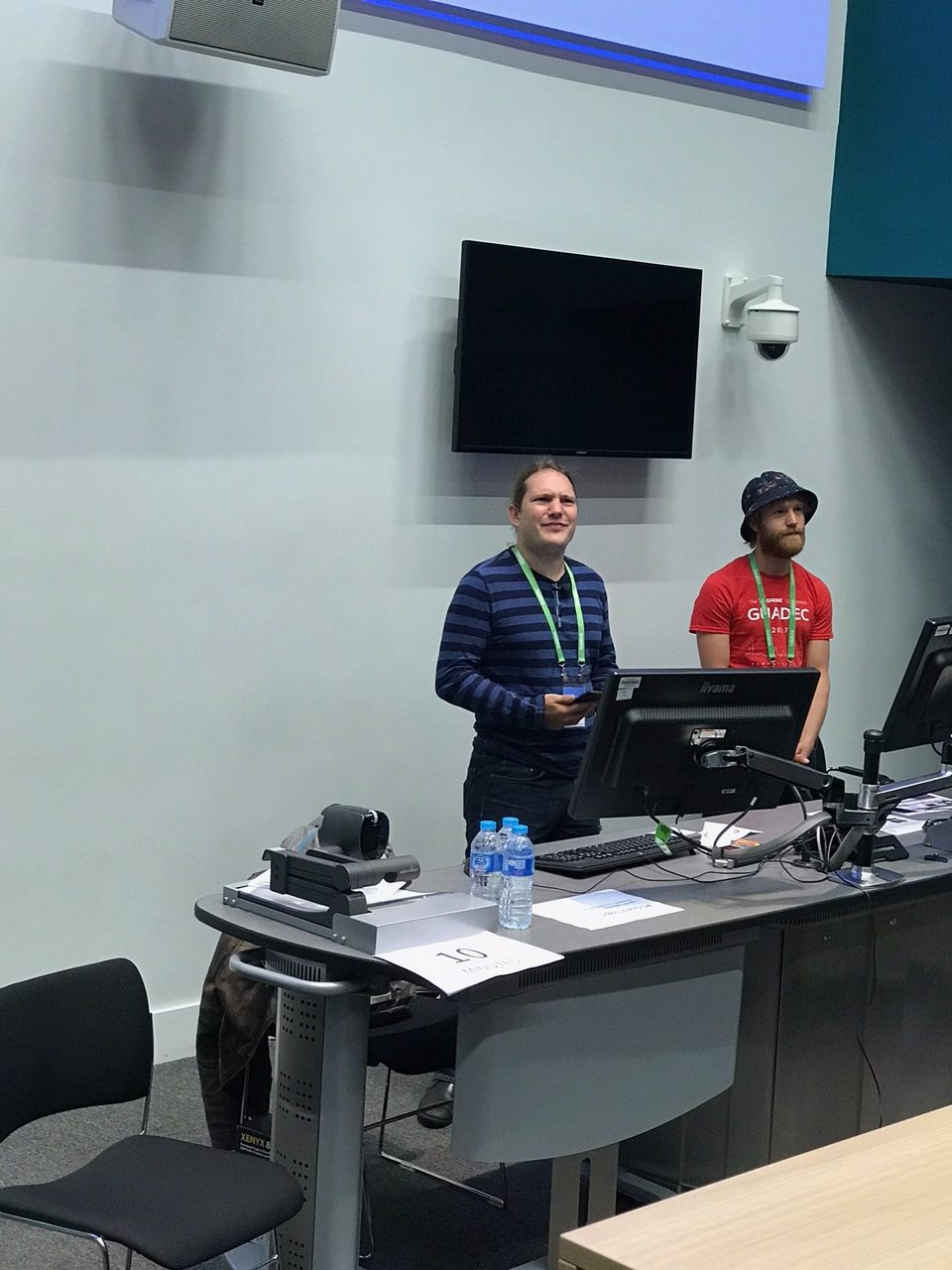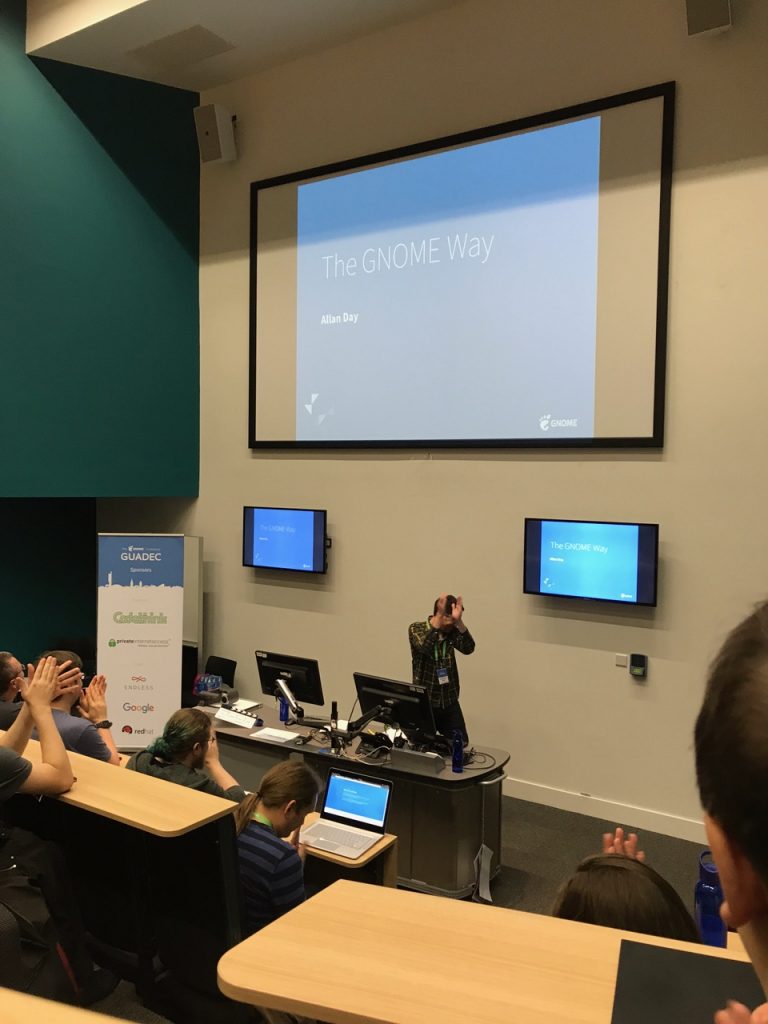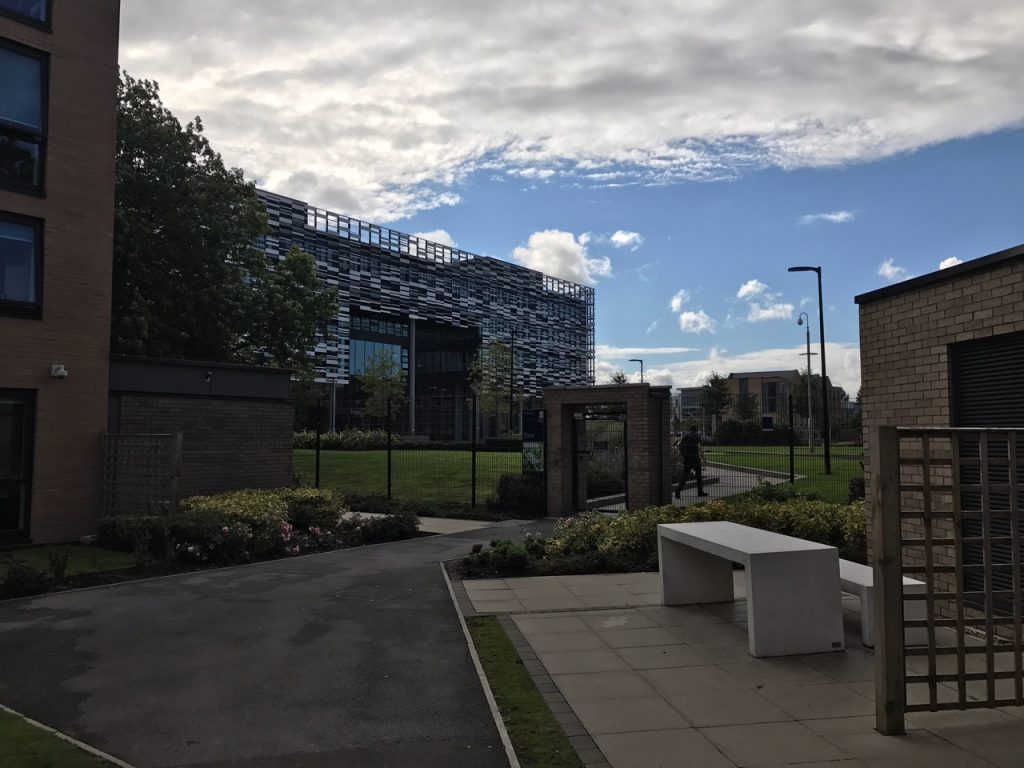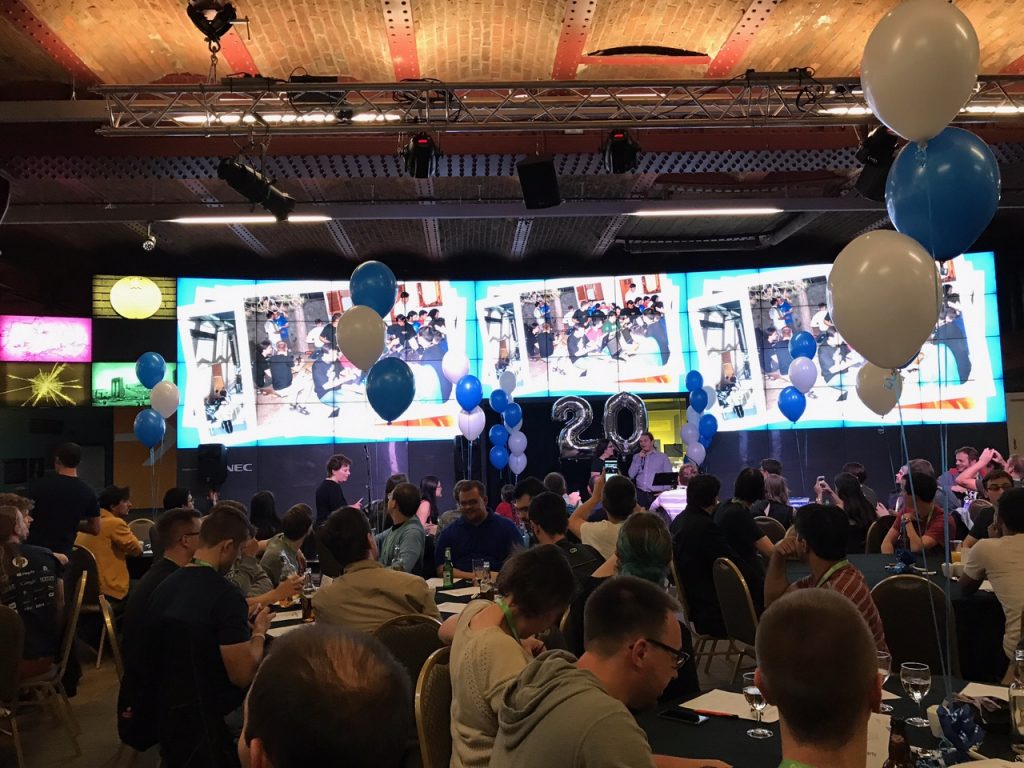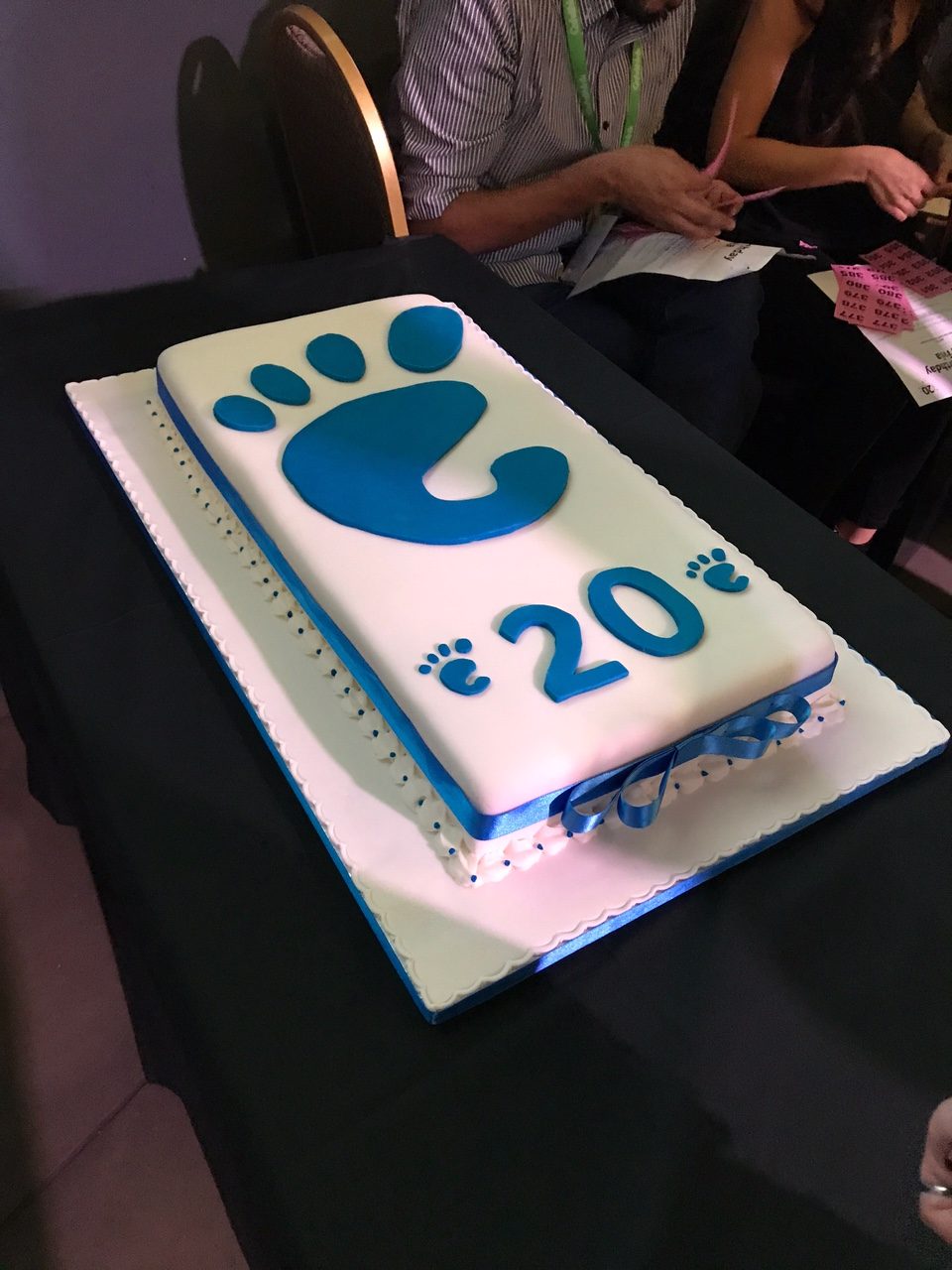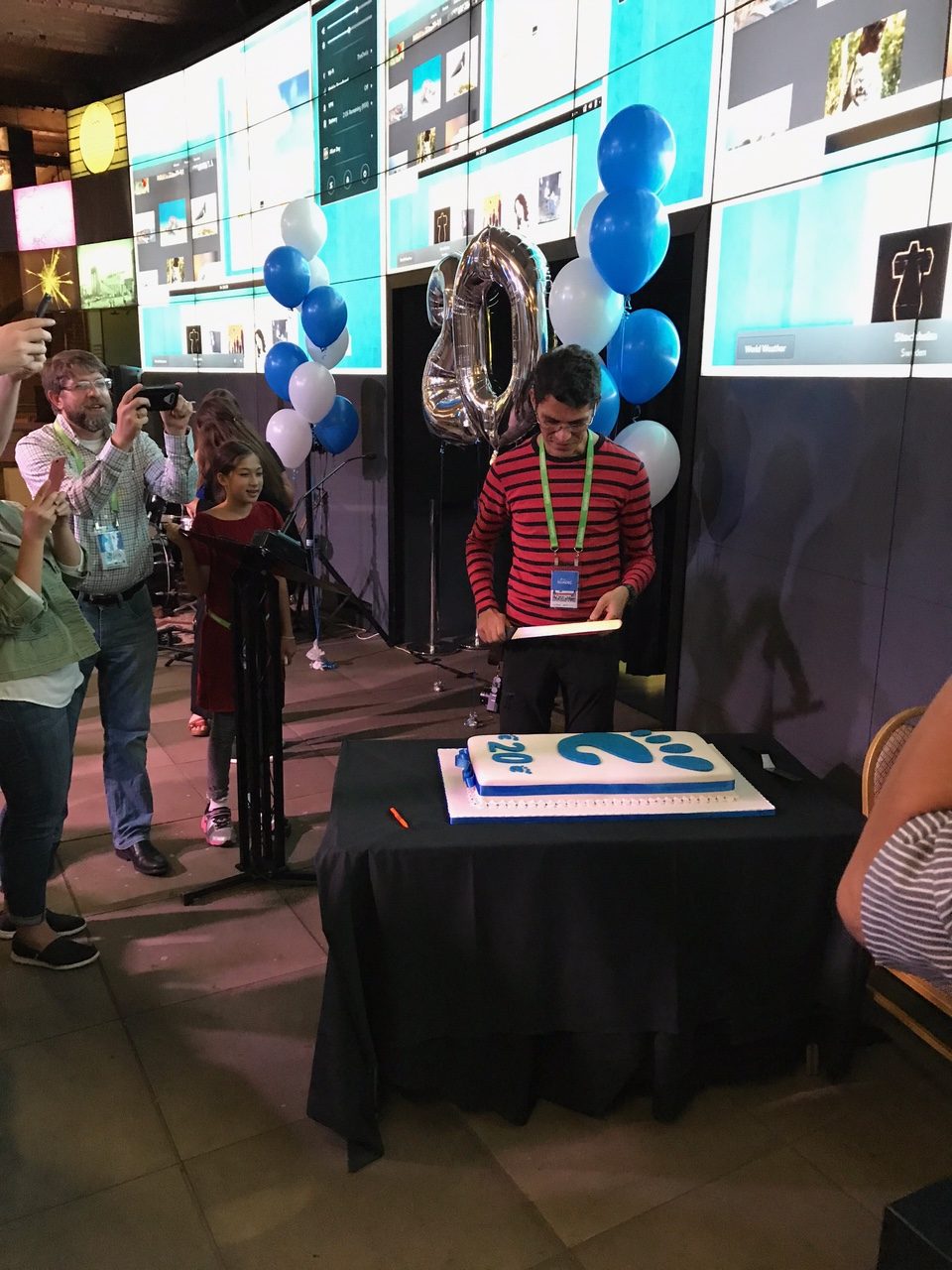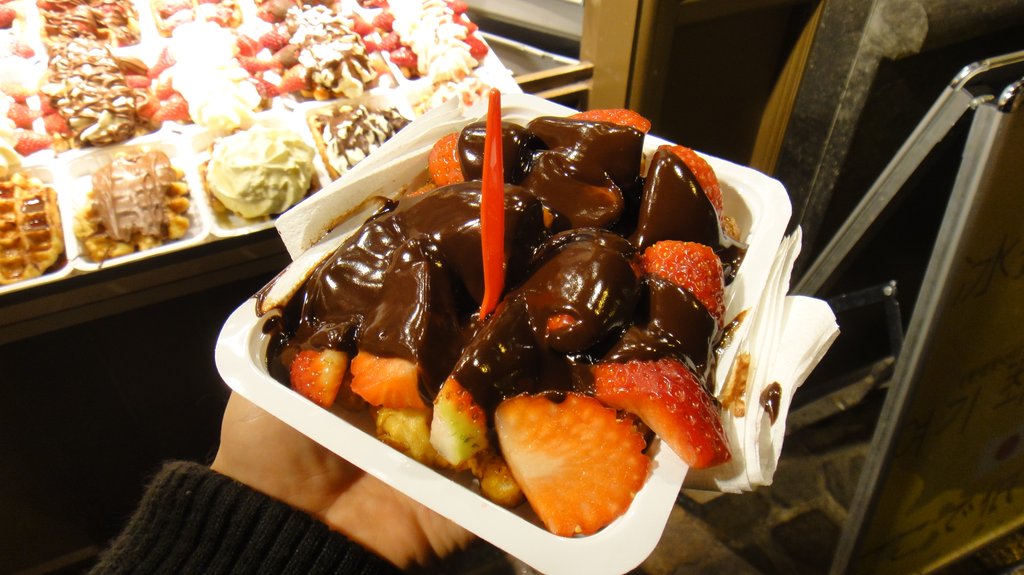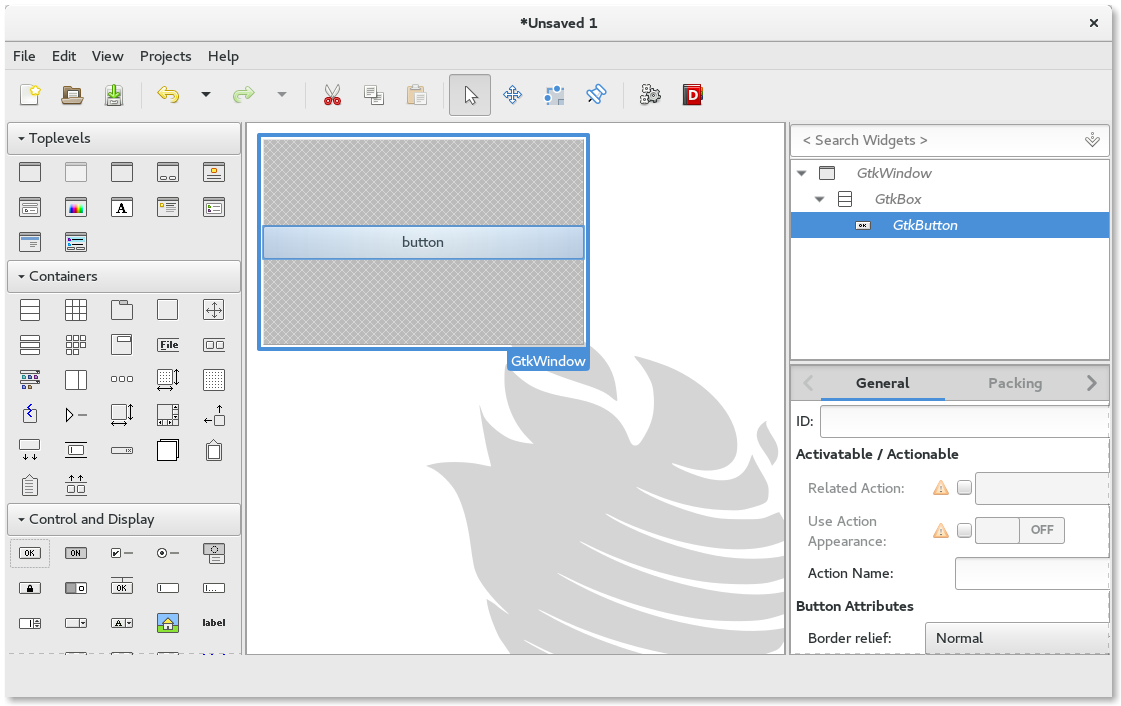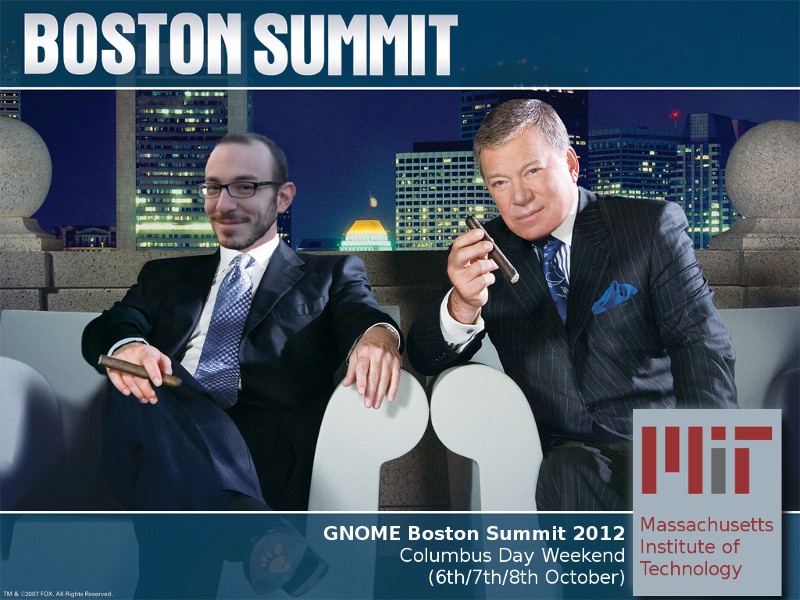Tapas, jamón are the first words that come to my mind after this year GUADEC in Almería
One of the best part of traveling is discovering new customs and trying new things…
Do you want tomato with your toast for breakfast?
– Sure!
– why not!
But more important than food, for me GUADEC is always about the people, meeting new people, people you always respected (still can not believe I meet the legendary JH) or putting a face to an irc nickname or email (albfan, never expected you to be so tall!) and of course catching up with old friends because being able to continue talking with someone like if it was yesterday when in fact it was a year, is priceless.
This GUADEC was special to me because it was the first time I did not talked about Glade, instead I showed a new library called Maxwell I made working at Endless.
 What is Maxwell?
What is Maxwell?
Maxwell is a proof of concept library that extends WebKitWebView and lets you embed/pack Gtk widgets in it as a regular Gtk container.
Etymology
The project started inspired by the Broadway Gdk backend which lets you run any Gtk application over HTTP using HTML5 and web sockets which was named after X Consortium’s Broadway release where one of its key features was X-Agent 96.
X Agent 96 => Agent 86 => Maxwell Smart => Maxwell
How does it work?
The introduction of the split process model in WebKit2 made embedding widgets in WebView rather difficult since part of WebKit operates in one process and the rest like WebCore and JS engine in another (UI/Web process).
Maxwell takes a similar approach to Broadway, all it needs is a way to render widgets in the DOM tree and get events from them.
To render widgets we use a CANVAS element the same size of the widget and a custom URI scheme to get the raw image data from each widget.
/* Get image data from widget */ let xhr = new XMLHttpRequest(); xhr.open('GET', 'maxwell:///widget_id', false); xhr.responseType = 'arraybuffer'; xhr.send(); /* Render image data in canvas */ let data = new Uint8ClampedArray(xhr.response); let image = new ImageData(data, canvas.width, canvas.height); canvas.getContext('2d').putImageData(image, 0, 0);
On the Gtk side, each child is rendered in an offscreen window which we use as the source image data to implement the custom URI scheme handler.
| Gtk UI process | JavaScript/WebCore |
|---|---|
| GtkWidget:draw↴ | |
| Damage event ⟶ JS child_draw() ⟶ | GET maxwell:// |
| URI handler ⟵ | ↲ |
| ↳[offscreen]⟶[GdkPixbuf]⟶GIOStream ⟶ | [ImageData]↴ |
| putImageData() |
For events all we have to do is properly implement GdkWindow::pick-embedded-child and let Gtk know which child widget should get the event. In order to do so we need to keep track of the elements position relative to WebView’s viewport which can be calculated with getBoundingClientRect().
API
The API is pretty straightforward, all you have to do is name the child widget and add it using regular GtkContainer API.
/* Create a Maxwell Web View */
webview = maxwell_web_view_new ();
/* Create a widget to embed */
entry = gtk_entry_new ();
/* Set a unique name on the widget */
gtk_widget_set_name (entry, "myentry");
/* Add widget to web view container */
gtk_container_add (GTK_CONTAINER (webview), entry);
In order for MaxwellWebView to know where to place a child in the DOM tree you need to add a CANVAS element with a “GtkWidget” class and the unique ID you used as the widget’s name.
<canvas class="GtkWidget" id="myentry"></canvas>
Maxwell will also try to honor width and height style properties set on the canvas element. So for example if you want your widget to expand horizontally you can do:
<canvas class="GtkWidget" style="width: 100%;" id="myentry"></canvas>
You can get it at https://github.com/endlessm/maxwell
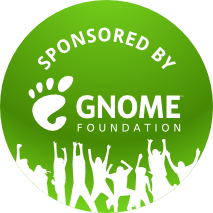 As usual I would like to thanks the GNOME Foundation for sponsoring my trip to Spain and making all this possible.
As usual I would like to thanks the GNOME Foundation for sponsoring my trip to Spain and making all this possible.
Finally some extra pictures…
